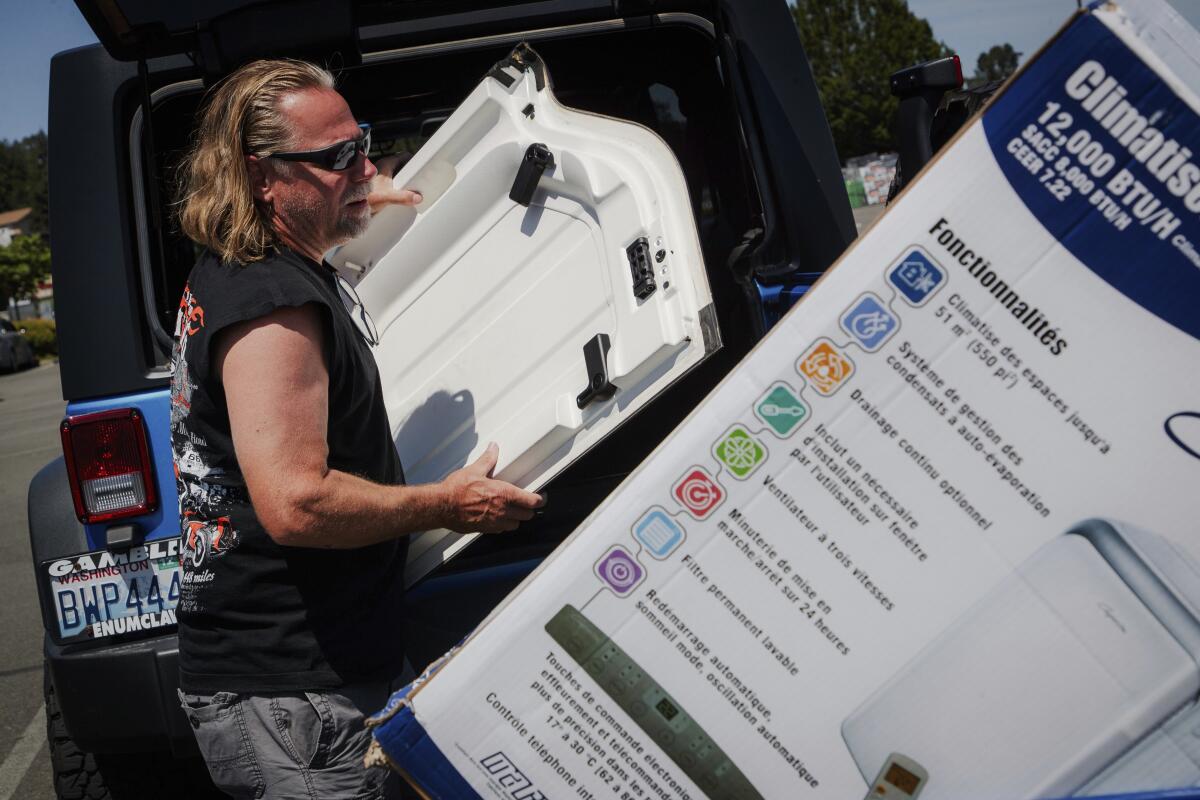Heat wave to hit Northwest as Northeast sees some relief

PORTLAND, Ore. — The Pacific Northwest is bracing for a major heat wave just as the Northeastern part of the United States will soon see a slight break in extreme temperatures.
In Washington state and Oregon temperatures are forecast to top 100 degrees in some places this week as climate change fuels longer hot spells in a region where such events were historically uncommon.
“To have five-day stretches or a weeklong stretch above 90 degrees is very, very rare for the Pacific Northwest,” said Vivek Shandas, professor of climate adaptation at Portland State University.
The scorching weather comes as the opposite side of the country saw forecasts for slight cooling early this week after a stretch of days when temperatures topped 100 in multiple places.
Philadelphia hit 99 degrees Sunday before even factoring in humidity. Newark, N.J.,saw its fifth consecutive day of 100 degrees or higher, the longest such streak since records began in 1931. Boston also hit 100 degrees, surpassing the previous daily record high of 98 degrees set in 1933.
At least two heat-related deaths have been reported in the Northeast.
Although such high temperatures are sometimes seen in the Northeast, local officials and residents in the Northwest have been scrambling to adjust to longer, hotter heat waves following last summer’s deadly “heat dome.”
In late June and early July 2021, about 800 people died across Oregon, Washington and Canada’s British Columbia during the days-long extreme heat event, which saw record temperatures soar to 116 degrees in Portland and smash heat records in cities and towns across the region. Many of those who died were elderly and lived alone.
Although temperatures aren’t expected to reach those highs next week, the number of consecutive hot days has officials on guard. Portland, Ore., could top 100 degrees on Tuesday and wide swaths of western Oregon and Washington are predicted to be well above historic averages throughout the week.
“It’s nothing we haven’t seen before in terms of the magnitude, but the duration of the event is fairly unusual,” said John Bumgardner, a meteorologist at the National Weather Service office in Portland.
“We’re trying to message that people who don’t have AC might have a harder time near the end of the event,” said Bumgardner, adding there may be an “accumulation” of sleep deprivation if it doesn’t cool off sufficiently at night. Overnight temperatures may not dip below the 70s in some areas.
Much of the U.S. saw above-average warmer temperatures in June, according to the National Oceanic and Atmospheric Administration. The NOAA estimates that weather and climate disasters, including tornados, hail and extreme drought, have cost at least $9 billion in damage across the nation so far this year.
Portland’s Bureau of Emergency Management is opening cooling centers in public buildings and installing misting stations in parks. Officials hope outreach efforts will help those facing the greatest risk from heat, including people who are older, people who live alone, those with disabilities, low-income households without air conditioning and unhoused people.
“Unfortunately there’s this intersection of our climate crisis and our housing emergency,” said Jonna Papefthimiou, chief resilience officer for the Portland Bureau of Emergency Management, adding that unhoused people “face the greatest risk from all kinds of severe weather.”
Last year’s deadly heat dome prompted the city of Portland and the state of Oregon to take action. The Portland Housing Bureau will require newly constructed subsidized housing to have air conditioning. A new state law will require housing built after April 2024 to have air conditioning in at least one room, and prevents landlords from restricting tenants from installing cooling devices in most cases.
Portland also launched a heat response program to provide heat pumps and cooling devices to vulnerable residents. It aims to distribute 15,000 units over the next five years.
Some 3,000 cooling units have been ordered but only around 750 have been installed so far, according to figures from Earth Advantage, the nonprofit overseeing the program’s purchases and logistics. This is partly due to supply chain shortages amid growing demand for air conditioners, according to Jaimes Valdez, the organizational, development and policy manager for the Portland Clean Energy Fund, which oversees the initiative.
“This equipment is in high demand, not just in the region but globally,” said Valdez, citing recent heat waves in Europe. “We do see a lot of need and this program is ramping up.”
Portland Parks and Recreation and Human Access Project, a nonprofit working to increase access to and recreation in the city’s Willamette River, are promoting six recommended swimming areas in the river ahead of the heat wave.
To reduce emissions and adapt to climate change in the long term, experts say cities will have to improve urban design standards as well as buildings’ insulation, weatherization and heating and cooling systems.
PSU’s Shandas says the Pacific Northwest has “tipped over into a new normal.”
“The ecology is not prepared for it, our infrastructure’s not prepared for it, and certainly the communities are just now trying to figure out what to do about it,” he said.
More to Read
Sign up for Essential California
The most important California stories and recommendations in your inbox every morning.
You may occasionally receive promotional content from the Los Angeles Times.










